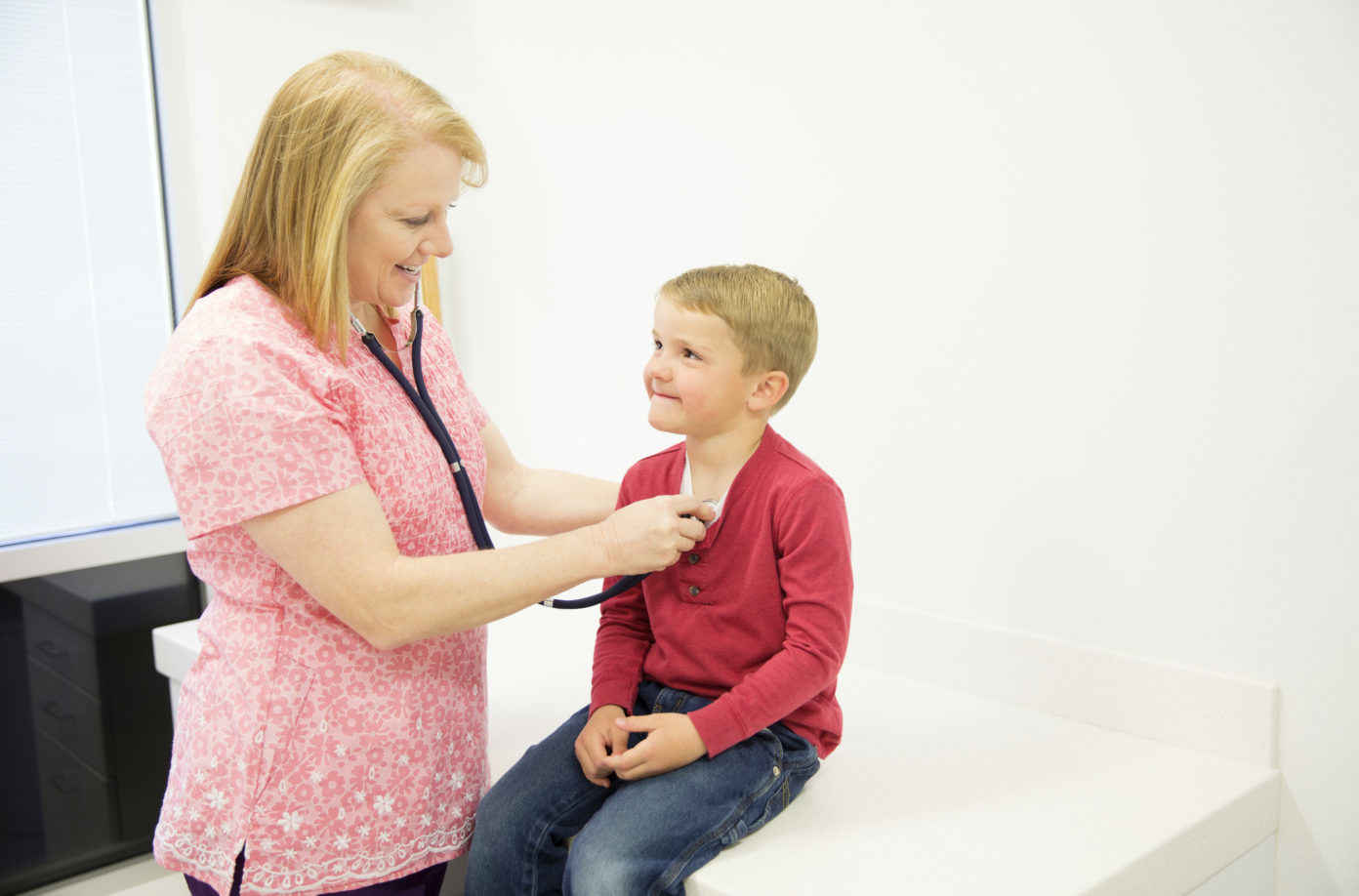What School Nurses Really Do: Realizing the Power of School Nursing in Public Health
December 19, 2018
Overview
School nurses can play a critical role in advancing child and adolescent health — including expanding access to care for many children. However, laws across the country do not yet recognize the importance of school nurses, and only one state requires a full-time registered nurse in every school.

When many Americans think about the term school nurse, they envision a nice lady sitting at a desk applying Band-Aids to scraped elbows, taking temperatures, and allowing kids to nap on the vinyl upholstered cots in her office. Indeed, most of us have no idea what school nurses actually do. The reality is that school nurses deal with far more severe medical and emotional issues on a daily basis than most realize.
Take Linda, for example. Linda is a school nurse in a large rural school district that has three elementary schools, two middle schools, and one high school. She splits her time among the six schools. Just in the last week, Linda has:
- Worked with a special education teacher on in-classroom management of a child with Downs Syndrome and pulmonary disease.
- Met with the school counselor, school psychologist, and school social worker at the central office to finalize a community services resource guide that can be used in all the schools.
- Conducted a training for teachers in all the schools on how to respond to students having medical emergencies related to breathing, having a seizure, experiencing low blood glucose, and experiencing a life-threatening allergic reaction.
- Recommended to an elementary school principal that the pesticide application scheduled for next Tuesday should be rescheduled during the weekend, to reduce toxic exposure to the students.
- Counseled and referred a high school student for screening for a sexually transmitted infection.
- Handled a request for student health data from the local health department for a study on best practices in school-located vaccination clinics.
- Attended three meetings to develop and finalize health plans for students with chronic health conditions.
Linda’s story is just a glimpse into the daily work of a typical school nurse in the US, but it is illustrative of the many ways that school nurses are—or should be—leaders in improving child and adolescent health.
- Registered school nurses are uniquely positioned at the intersection of student health and education. For public health, they represent an important resource for improving child and adolescent health, because school nurses understand the complexity of the relationship between physical and mental wellbeing and academic achievement—and they can reach kids where they spend the majority of their time.
- As school-based healthcare professionals, school nurses are likely to be the school staff members with the most comprehensive knowledge of the many health conditions and injuries experienced by children and adolescents. They provide important leadership in schools to ensure the school environment is safe and healthy, and are able to identify and recommend solutions to adverse environmental exposures or unsafe conditions at school.
- School nurses are also trained and positioned to recognize potential mental health problems or concerns in the child’s home and community environments that can affect their health and performance at school, such as unhealthy or unstable housing, economic instability, or exposure to violence.
- School nurses provide an important bridge for communication among teachers, health care providers, students, and parents about a student’s health plan, necessary accommodations related to disabilities, and progress.
With few exceptions, laws across the country have not recognized the critical role that school nurses can play in improving the health and wellbeing of the next generation. For example, only Delaware requires a full-time registered nurse in every school.[ii] Many jurisdictions require districts to “share” a school nurse or do not have one at all. Many of the benefits that school nursing provides can only be realized if the nurse is always in the school, building relationships with the students, parents, and school staff. For example, a school nurse will realize that a student who is routinely coming to her office with a “stomachache” may actually suffer from anxiety, but she will not be able to make this connection if she isn’t in the building enough to notice.
In partnership with the National Association of School Nurses (NASN), the Network is developing a number of resources on legal issues related to school nursing, such as ensuring access to school nursing services for all students, school nursing scope of practice laws, and the role of school nurses in a variety of public health concerns affecting children and teens, including concussions and chronic absenteeism. The Network’s school nursing page will be updated regularly with information on laws that impact school nurses and how law and policy can improve child and adolescent health, beginning in our schools.
Posted by Kerri McGowan Lowrey, Deputy Director, Network for Public Health Law Eastern Region Office and Donna Mazyck, Executive Director, National Association of School Nurses.
The Network for Public Health Law provides information and technical assistance on issues related to public health. The legal information and assistance provided in this document do not constitute legal advice or legal representation. For legal advice, readers should consult a lawyer in their state.
Support for the Network is provided by the Robert Wood Johnson Foundation (RWJF). The views expressed in this post do not necessarily represent the views of, and should not be attributed to, RWJF.
